Standard [CURRENT]
ASTM E 2263:2025
Standard Test Method for Paired Preference Test
- Publication date
- 2025
- Original language
- English
- Pages
- 14
- Publication date
- 2025
- Original language
- English
- Pages
- 14
- DOI
- https://dx.doi.org/10.1520/E2263-25
Product information on this site:
Quick delivery via download or delivery service
Buy securely with a credit card or pay upon receipt of invoice
All transactions are encrypted
Short description
1.1 This document covers a procedure for determining preference between two products using either a two-alternative forced-choice task, or with the option of choosing no preference. Preference testing is a type of hedonic testing. 1.2 A paired preference test determines whether there is a statistically significant preference between two products for a given population of respondents. The target population must be carefully considered. 1.3 This method establishes preference in a single evaluation context. Replicated tests will not be covered within the scope of this document. 1.4 Paired preference testing can address overall preference or preference for a specified sensory attribute. 1.5 The method does not directly determine the magnitude of preference. 1.6 A significant difference in preference implies that the products are perceived as different. Refer to Test Method E2164 for directional difference test. 1.7 A paired preference test is a simple task for respondents, and can be used with populations that have minimal reading or comprehension skills, or both. 1.8 Preference is not an intrinsic attribute of the product, such as hue is, but is a subjective measure relating to respondents' affective or hedonic response. It differs from paired comparison testing which measures objective characteristics of the product. Preference results are always dependent on the population sampled. 1.9 This standard does not purport to address all of the safety problems associated with its use, when testing includes hazardous materials, operations, or equipment. It is the responsibility of the user of this standard to establish appropriate safety, health, and environmental practices and to determine the applicability of regulatory limitations prior to use. 1.10 This international standard was developed in accordance with internationally recognized principles on standardization established in the Decision on Principles for the Development of International Standards, Guides and Recommendations issued by the World Trade Organization Technical Barriers to Trade (TBT) Committee.
ICS
03.100.10
DOI
https://dx.doi.org/10.1520/E2263-25
Also available in
Loading recommended items...
Loading recommended items...
Loading recommended items...

